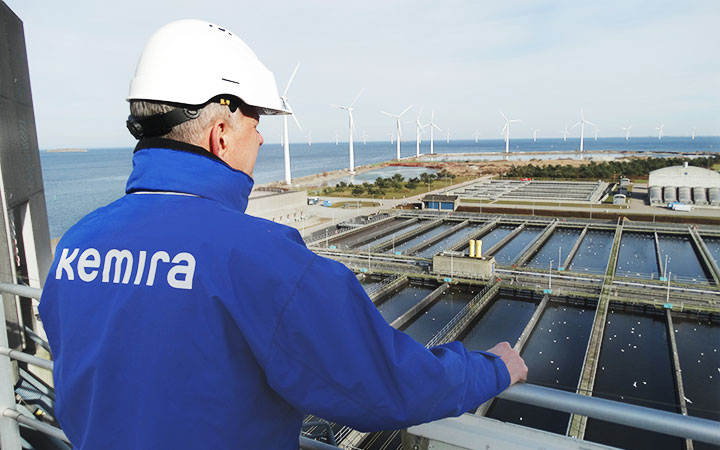Copenhagen opts for performance-based sludge treatment model

Biofos operates
wastewater treatment plants
They serve
people in the Copenhagen area
And treat daily
cubic meters of wastewater at Lynetten
BIOFOS is Denmark’s largest wastewater treatment operator, serving 1.2 million inhabitants in the Copenhagen metropolitan area via its treatment plants in Lynetten, Avedøre, and Damhusåen. BIOFOS utilizes the sludge generated from wastewater treatment for climate-friendly electricity, biogas, and district heating for the grid.
At the Lynetten plant, which is located close to the center of Copenhagen, wastewater is treated mechanically, biologically, and chemically to ensure it meets the strict standards set by the local environmental authorities. Organic matter, nitrogen and phosphorus are removed by biological treatment, and the excess phosphorus is removed from the water using chemicals. After treatment, the purified wastewater is directed to Øresund, the recipient water body that separates Denmark from Sweden.
Chemistry fine-tuning brings significant improvements
“We handle a 60/40 mix of bio-sludge and primary sludge which is processed in our on-site digesters to generate biogas for the city’s gas network and used for the district heating system,” says Peter Christiansen, Plant Manager at BIOFOS.
As well as looking to improve their sludge dewatering process to cut costs, the plant was also facing a challenge in the form of struvite build-up. This was causing problems in anaerobic digesters, pipes, pumps, and other equipment.
Based on a comprehensive analysis of the dewatering process at BIOFOS Lynetten, Kemira’s experts were able to identify where some fine-tuning to the chemistry would deliver significant improvements for the process.
“Because it’s a performance-based service, BIOFOS can rest assured that it’s also in Kemira’s best interests to ensure that everything is running smoothly.”

New model for smart process management
Along with Kemira´s new Superfloc™ XD-5500 sludge dewatering polymer BIOFOS also took the Kemira KemConnect™ SD into use. The service optimizes chemical sludge treatment prior to dewatering, according to the customer’s unique process conditions. It is based on jointly agreed performance targets. The service includes high performance chemical products, application expertise, online measurement sensors, and recommendations on optimal dosing points, as well as a customized reporting system.
The KemConnect SD unit installed at the Lynetten plant controls Superfloc XD-5500 dosing based on Kemira’s patented algorithm, while sensors at various points in the process gather key data: inlet dry solids in the centrifuges, suspended solids in the reject water, and dry solids content of the sludge.
The setup gives a significant advantage when it comes to optimizing our process. And because it’s a performance-based service, BIOFOS can rest assured that it’s also in Kemira’s best interests to ensure that everything is running smoothly. While this type of agreement is good, it requires some out of the box thinking in the conventional tendering process for suppliers.
BIOFOS also get a good overview of their daily operations, with clear KPI reporting available at the click of a button.
Precision and peace of mind
Since signing the KemConnect SD service agreement, BIOFOS has seen significant improvements all round. Energy consumption for the sludge treatment process is down by almost 4.5 MW, while suspended solids in the reject water have fallen from 500–1000 mg/l to less than 100 mg/l. This is important because the better the quality of the reject water, the less needs to be returned to the plant for further treatment.
As well as helping BIOFOS to optimize their sludge dewatering process, eliminate struvite issues, and cut polymer consumption, they also get a good overview of their daily operations, with clear KPI reporting available at the click of a button.
GWh annual reduction in energy consumption
reduction in suspended solids in reject water
mg/l reduction of phosphorus in the centrate from dewatering
You might also be interested in

